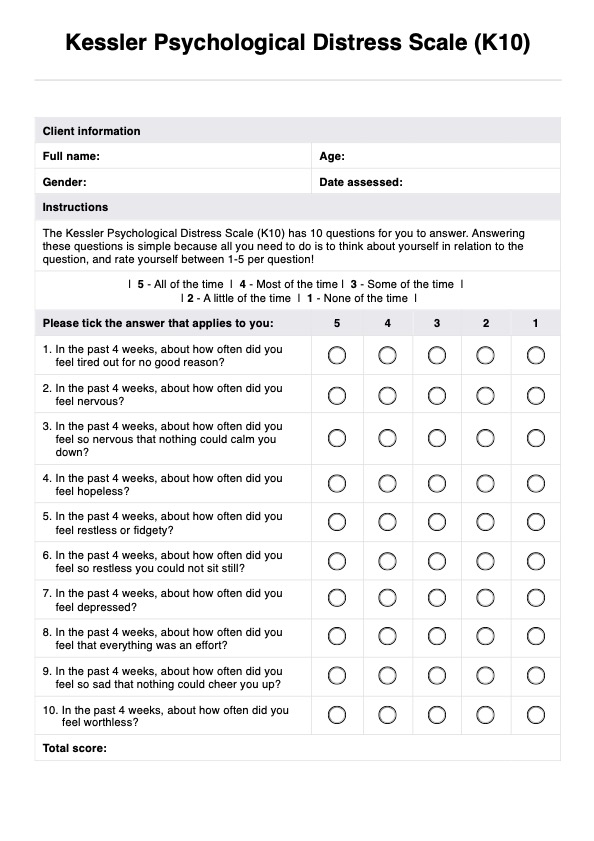The Kessler Psychological Distress Scale (K10) creates a semblance of objectivity through the scoring ranges and their respective designations. This is to help frame things for both the therapist and their client to help determine what they can include in the treatment plan.

Kessler Psychological Distress Scale (K10)
Use the Kessler Psychological Distress Scale (K10) to gauge a client's level of psychological distress so you can provide the needed mental health support.
Kessler Psychological Distress Scale (K10) Template
Commonly asked questions
The best time to issue this to your client is when you need to gauge their mental state and the current level of their nonspecific psychological distress. In the event that your treatment plan spans a long time, it’s good to issue this every four weeks to see if there are any improvements in their distress levels. It’s also a good way to see if your treatment plan is working.
Yes. Practitioners can issue this to adults and children. It’s also easy to use since all the client has to do is rate themselves based on the guide questions. If you're assessing the child, make sure they understand what they're reading, and help them understand if they don't.
EHR and practice management software
Get started for free
*No credit card required
Free
$0/usd
Unlimited clients
Telehealth
1GB of storage
Client portal text
Automated billing and online payments











